It can be frustrating and inconvenient if you have a clogged basement drain with standing water. The good news is that you can take a few steps to unclog the drain.
This article will provide you with some easy-to-follow instructions on how to unclog a basement drain with standing water. Following these steps, you can clear the blockage and restore the water flow in your basement drain.
It is important to note that if the clog is severe or you cannot clear it on your own, it is best to call a professional plumber to handle the issue.
How To Unclog A Basement Drain With Standing Water?
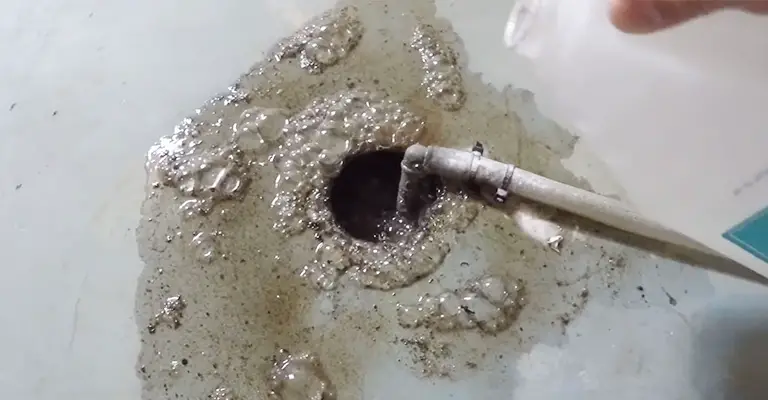
If you have a clogged basement drain with standing water, you should try removing as much of the standing water as possible using a bucket or a wet/dry vacuum. This will make it easier to access the drain and unclog it.
To unclog the drain, you can try using a plunger to create suction and loosen any blockages in the drain. If this doesn’t work, you can use a plumbing snake or auger to clear the blockage.
Here’s a step-by-step guide on how to unclog a basement drain with standing water:
- First, remove as much standing water as possible using a bucket or a wet/dry vacuum.
- Next, wear rubber gloves and safety glasses to protect yourself from debris or bacteria in the standing water.
- If the drain has a removable grate or cover, remove it carefully to access the drain opening.
- If the clog is near the drain’s opening, use a plunger to create suction and loosen the blockage. Place the plunger over the drain’s opening and push down firmly several times to create suction.
- If the plunger doesn’t work, try using a plumbing snake or auger to clear the blockage. These tools are long, flexible rods with curved ends that can be inserted into the drain to break up and remove any debris causing the clog.
- Slowly and carefully insert the plumbing snake or auger into the drain, making sure not to push it too far down the pipe. Gently twist and turn the tool as you push it into the drain to break up any blockages.
- Once the blockage has been cleared, slowly and carefully remove the plumbing snake or auger from the drain.
- If the standing water doesn’t drain away after clearing the blockage, you may need to use a wet/dry vacuum to remove any remaining water and debris from the drain.
- Finally, replace the grate or cover on the drain, and wash your hands thoroughly with soap and water after handling the drain.
How to Clear a Basement Drain Without a Snake?
Homeowners can use a plumbing snake to solve this problem, but there are others they can try.
1. Clean the Trap
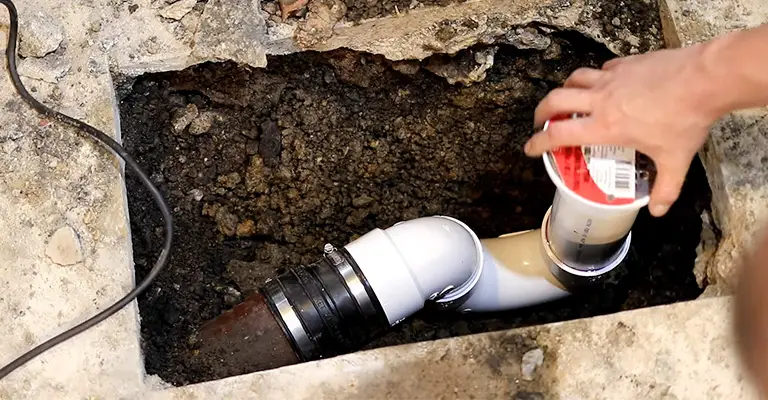
To restore your floor drain’s functionality, you must first clean its trap. To do this, you need to locate the backflow preventer in your basement, remove its cap, and then use a chisel to drive it around the notches in the retaining ring.
The sediment in the trap likely is part of what’s causing the problem, so loosen the ring and backflow ball, and use a shop vacuum to clean it out.
Using a power drill, connect a strong wire to a cleanout plug on the backflow preventer, so you can spin it into the pipe opening once the trap has been cleaned. Once the clog is cleared, your water should flow again.
2. Try Baking Soda and Vinegar
Unclogging a drain with baking soda and vinegar is possible if the blockage isn’t particularly stubborn. First, pour boiling water down the drain, then add 12 cups of baking soda.
On top of the baking soda, pour one cup of vinegar and one cup of boiling water. Let that sit for a few minutes. After five to ten minutes, add another pot of boiling water and flush it one last time.
3. Avoid Chemical Drain Cleaners
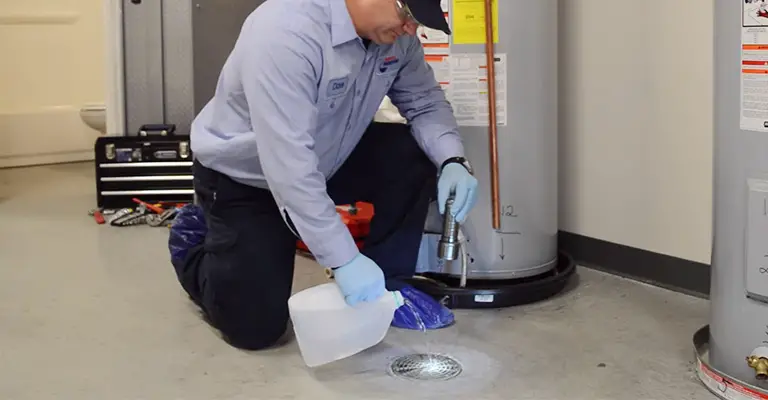
You may need to call Garvin’s Sewer Service to handle the clog if that does not work.
You should avoid using chemical drain cleaners because they cause toxic material to enter the sewer system and even cause older plumbing systems to corrode. It is best to let professionals handle chemicals if they are needed.
4. Signs of Basement Floor Drain Clogs
It seems like your basement floor drain is clogging up. The situation is not uncommon. Floor drains are more likely to clog than other drains due to their location on the floor, where dirt and debris tend to accumulate.
There is a good chance your floor drain’s P-trap is dry if you notice it is emitting horrendous smells. The P-trap in your home can be dry, allowing sewer gases to enter. To fill the P-trap, grab a bucket and begin pouring water down the drain.
Add about five gallons to the trap to seal off all sewer gases completely after dumping a gallon or two.
If you add water to the drain, you can see if it is functioning correctly or is already blocked. By regularly watering the floor drain, you will be able to make sure it is ready when you need it.
What Causes a Basement Floor Drain Clog?
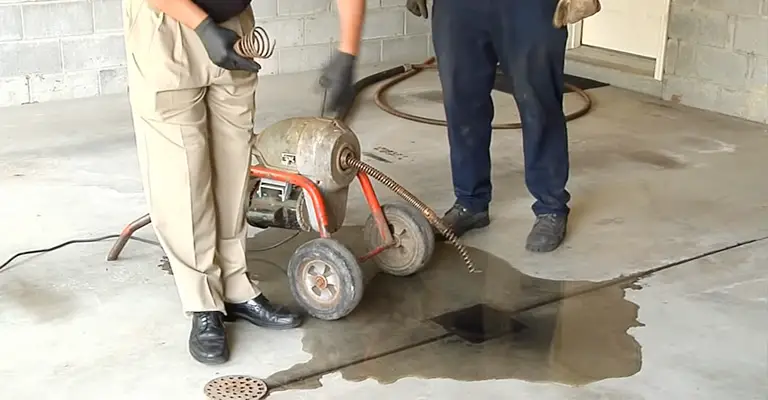
You will find your basement floor drain at the lowest point of your basement. Its purpose is to transport all water safely away from your home and into a municipal storm drain or sewer system.
In addition to keeping your basement dry, this prevents flooding, which could cause damage to your personal belongings.
A leaking HVAC system, a leaking water heater, or a leak in the foundation commonly causes basement water leaks.
It is important to note that basement floor drains are susceptible to clogging, even more so when water is present, because dirt, pet hair, and other debris can quickly fall down the drain.
The most common mistake homeowners make sweeping their basement dirt into the floor drains.
Various factors can cause a basement drain to clog, including clogs in the mainline, broken, or damaged pipes, and water flow problems.
Typically, the pipes become clogged when sediment or waste accumulates over time, creating a clog large enough to slow the water flow.
In addition to broken or damaged pipes, poor water flow and incorrectly installed lines are also possible causes.
There is also the possibility that torrential storms can leave dirt and another sediment in the system, which could lead to problems. The cause of the headache may not matter, but if left untreated, it can worsen.
Problems With Clogged Basement Drains
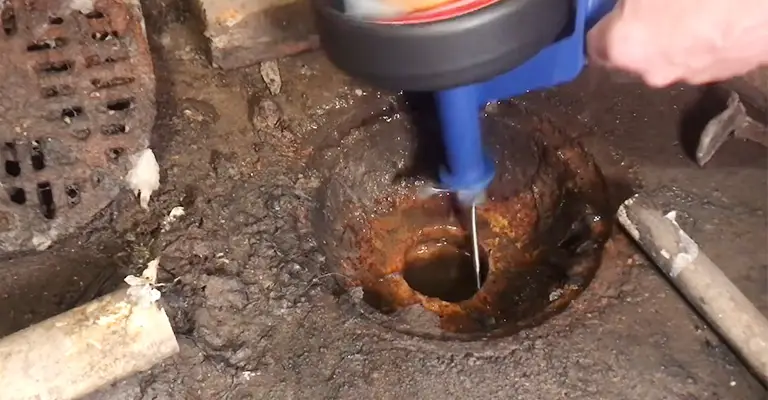
Whenever you encounter a clogged basement floor drain, you should immediately address the issue by DIY methods or contacting a professional plumber.
You should never use harsh chemicals to clear clogged basement drains since they only exacerbate the problem. A source of standing water in your home’s lowest level can cause a variety of problems, including:
- There is a risk of health issues associated with mold growth
- Injuries to personal property, such as furniture and valuable family items, such as photo albums
- The walls and floors are damaged
DIY Tips to Unclog a Floor Drain
When clearing your basement floor drain, it’s best to hire a professional plumbing company. If you have a clogged basement floor drain, you must resolve it immediately to avoid more serious problems.
Contacting a professional is the only reliable way to ensure a drain clog is completely cleared. Consider trying the tips below to clear a minor drain clog and prevent future ones from occurring if you’re handy.
- Remove the cover of the floor drain using a screwdriver.
- If debris is near the drain, use rubber gloves to reach inside and remove it.
- Allow 15 minutes to pass after pouring boiling water down the basement drain.
- Grab a plunger from your bathroom and start plunging.
- Don’t hesitate to plunge the plunger cup into the floor drain a few times. If you have a minor clog, this step will help, but not if you have a serious one.
- The plunger may not unclog your floor drains, but you can use baking soda and a small amount of white vinegar.
- The use of a mechanical drain cleaning machine is recommended for serious clogs.
A licensed plumber is most likely to be able to assist you with mechanical drain cleaning if you do not own a machine, and we strongly recommend contacting one for this service.
How to Prevent Future Basement Floor Drain Blockage?
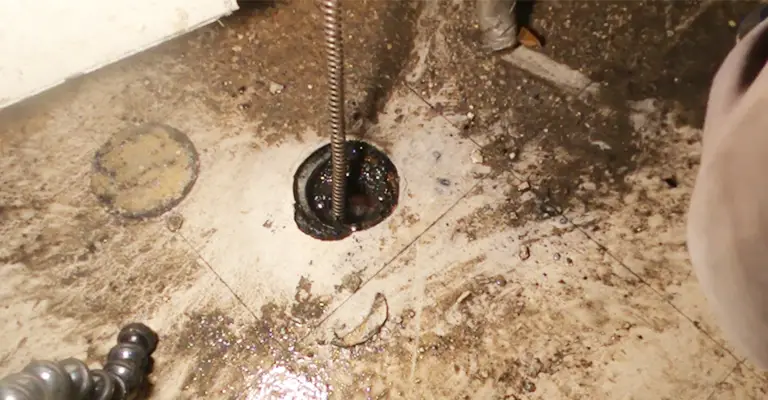
The best thing you can do is put in place measures, so you won’t have to deal with any problems in the future. The following tips will help you prevent basement floor drain blockage in the future:
Set Rules On What Can Be Thrown Down The Drain
Putting everything down the kitchen drain may not be a good idea. Fat, for instance, should never be discarded down the drain.
It should be thrown out in the garbage instead. Writing down what you can and cannot pour down the drain is crucial to prevent future blockages.
Don’t Use Too Much Soap When Washing Clothes
It does not matter whether the clog is in the shower or basement floor drain; soap is an important cause of clogs.
Avoid using too much soap when doing laundry to avoid clogging your basement floor drain. Rather than going overboard with soap, always follow the recommended amount for your load.
Use Natural Ingredients To Clear Soap Deposits.
It is better to detect a blockage as soon as possible. Despite not being able to use machinery, you can still take care of the problem yourself without contacting a professional plumber.
The first sign of a blockage can be caused by soap deposits that cannot be broken down with hot water and vinegar.
Final Tips
Whenever you encounter a clogged basement floor drain, you should immediately address the issue by DIY methods or contacting a professional plumber.
You should never use harsh chemicals to clear clogged basement drains since they only exacerbate the problem. The presence of standing water in the lowest level of your home can result in several issues, including:
- Structural damage to walls and floors
- A loss of personal property, such as furniture and photo albums, as well as damage to valuable family items
- An increase in mold growth can pose health risks.
To keep things from breaking, it’s important to remember to perform regular maintenance.
It’s not enough to live in a home and ignore all the parts – you also have to look after it. Knowing what not to do to your drains is vital to care for them.
It helps keep these things in mind, so you don’t have to deal with problems you don’t want, from setting rules about what can and can’t be thrown down a drain to using the right amount of soap.







